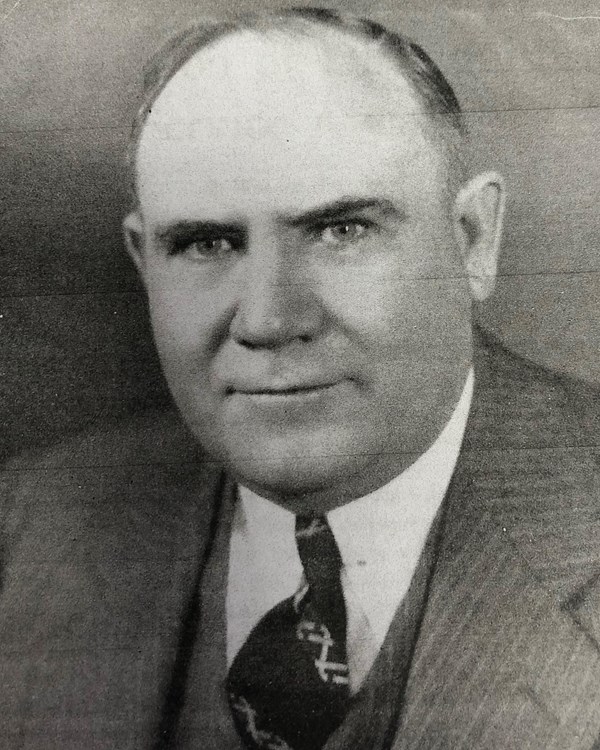Last updated: September 16, 2021
Person
Judge J. C. Hunter

NPS Photo
Jessie Coleman “J.C.” Hunter—an energetic, trustworthy, and shrewd businessman—wore many hats in the early 20th century. He first moved to Van Horn in 1911 as the Superintendent of Schools, and then became county treasurer, county judge, and the director and vice president of the Van Horn State Bank. He made his money during the oil and gas boom during the 1920s, and out of his offices in Abilene served as president of the Mid-Continent Oil and Gas Commission.
His introduction to the Guadalupe Mountains came in the mid-1910s while living in Van Horn. Like many enterprising Texans, Hunter joined the race for oil and went into partnership with Matt Grisham in the early 1920s. The two scoured the Trans-Pecos, digging exploratory wells and more often than not coming up dry. After these missions, Hunter became enthralled with the Mountains and began purchasing land. Within a few years Hunter had purchased thousands of acres from small landholders, bankrupt homesteaders and ranchers, or the state. Many of these transactions were through the Grisham-Hunter Corporation. This introduced him to the second large landholder in the area, Wallace Pratt, the petroleum geologist who amassed land in what is now McKittrick Canyon. Pratt later recalled that he and Hunter were in a race to purchase sections of McKittrick Canyon during the mid-1920s. Hunter knew more than he, according to Pratt, and Hunter purchased some of the best sections of the Canyon.
J.C. Hunter bought out numerous failing ranches during the Great Depression. The records of the Texas General Land Office in Austin are littered with foreclosures and sales of land in the Guadalupe region. Many of these properties ended up in the hands of Hunter. But even before the Depression, Hunter and Grisham were buying up sections of the Mountains. He purchased the Dolph Williams property, several sections of the Cox family holdings in Texas, and some in New Mexico. In 1926 the Grisham-Hunter outfit purchased four sections of T&P land near Devil’s Den Canyon on the state border, and one section in and alongside McKittrick Canyon. He also purchased two more sections north of Lost Peak near Dog Canyon from a man named J.R. Bonin in 1928. In 1931 Hunter had purchased much of the McCombs property, including a 683 acre plot in Block 65, between Smith Spring and the state line.
During one of his transactions with the Cox family he was first introduced to Noel Kincaid, who had married into the family and was managing a lot of the Cox properties. This introduction eventually led to J.C. Hunter hiring Kincaid in 1941 or 1942 to oversee the Guadalupe Mountain Ranch.
As Kincaid and Hunter began what was by all accounts a well-managed Ranch, Hunter and his associate, Matt Grisham, decided to make an offer to J.T. Smith for his Frijole property. Perhaps under financial duress, Smith agreed, and in the early 1940s the Grisham-Hunter operation made the Smith family home the headquarters for their ranch. In a year or two Hunter bought out his partner and assumed control of the operation. To offset the considerable costs of maintaining the ranch, Hunter diversified his business dealings in three ways. First, he leased sections of the ranch to oil and gas companies who were in a race to find new sources of fuel. Apparently they had little success in finding either. Second, Hunter purchased not only cattle, but sheep and goats, because of they were especially hearty and could withstand the heat and arid landscape. Third, he had already begun transforming his Ranch into a hunting preserve, and in that spirit, imported elk, Merriam Turkey, and various kinds of trout for recreational purposes.
The Hunter family ran the Guadalupe Mountains Ranch for more than twenty years, even when J.C. served a term as mayor of Abilene. In 1947 the Frijole Ranch
became the home of Noel Kincaid and his family, as Noel served as the foreman for the Hunter property. Kincaid lived there for nearly two decades.
Although Hunter was a businessman he was also a nascent conservationist. Some historical studies claim that the genesis for the creation of a park in the Guadalupes originated with Wallace C. Pratt, but as far back as the 1920s Hunter had thought that the region deserved protection. As he purchased the majority of land that became the present day park, he protected the land and its resources in the hope that the state would purchase the property and save it as some sort of preserve. Tentative talks with the Texas departments overseeing public land quickly disabused him of that notion, but he continued to hope that the lands could be protected. This was part of his motivation when he ran the Guadalupe Mountain Ranch as a hunting outfit with relatively minimal interest in cattle and goats. Hunting left a lighter footprint on the land and helped Hunter maintain the integrity of the landscape that he so dearly valued.
When J.C. Hunter died in 1945, his son, J.C. Hunter Jr. inherited the Ranch. “Jr.” followed in his father’s footsteps. He continued acquiring sections of land until the family ranch encompassed approximately 72,000 acres in the immediate vicinity of the Mountains. And, like his father, Jr. had an abiding interest in conservation and harbored similar dreams of seeing the Mountains protected in perpetuity.
Content adapted from Jeffrey Shepherd's 2012 NPS Historic Resource Study: "The Guadalupe Mountains and Environmental History in the West Texas Borderlands."
